Tuesday, November 30, 2010
Etsy Treasury Feature
I loved the idea for this treasury. April from withaflourish describes created this curated list to promote undiscovered shops. All shops featured in this treasury have less than 20 sales and many are affiliated with the Team Discovery, an Etsy Team, specializing in finding and highlighting individual, unique, undiscovered gems on Etsy. My watercolor, Landscape No. 13, was featured in the treasury, which was gorgeously curated.
Thursday, November 25, 2010
Artists on Etsy: Graham Heffernan
I am often frustrated by the quality of fine art on Etsy, but when you dig there are some really wonderful contemporary painters, such as Graham Heffernan.
Finding Graham Heffernan's work on Etsy renewed my faith in the site as a viable place for selling fine art.
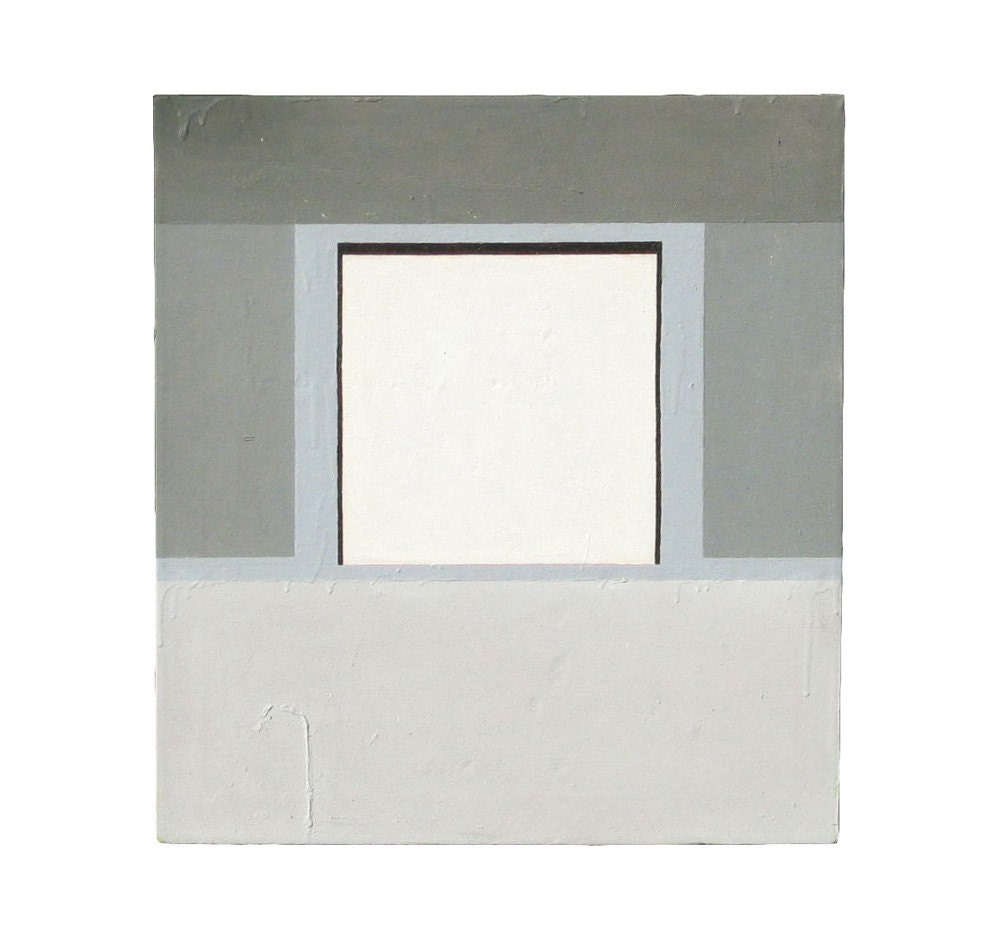 |
| Blue Room (22 x 24" oil on canvas) |
Graham Heffernan earned his BFA at Rhode Island College in 2006. In his senior year Graham Heffernan won the Special Talent Award, a merit based scholarship recognizing students with exceptional talent in the visual and performing arts. I don't know what his work looked like in college, but this stuff is brilliant.
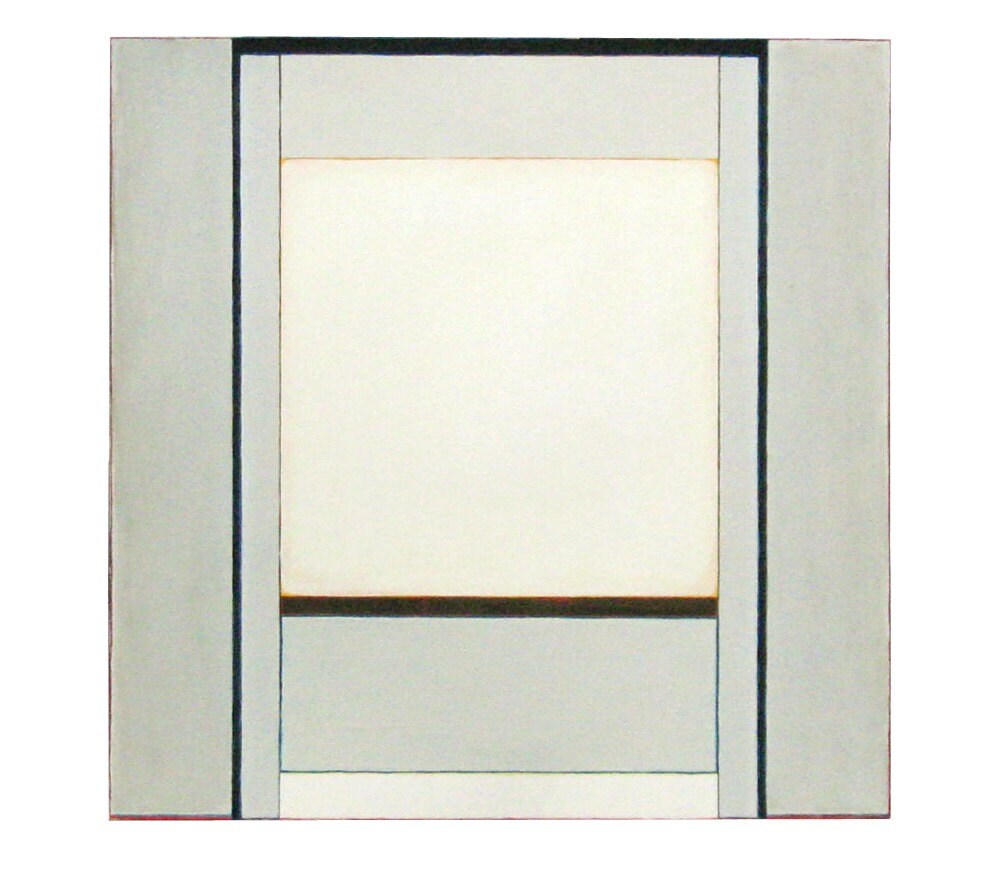 |
| Grey Abstract (12 x 12" gouache on paper) |
Before reading his statement or profile on Etsy, I noticed how spacial these works are. It's the kind of dynamism I really enjoy in paintings. While Heffernan uses planes of flat color, the paintings have depth and spacial awareness, especially Blue Room and Grey Abstract. The surface is certainly not flat, the attention Heffernan pays to the surface texture of his paintings is gorgeous. He admits in his artist statement that he often gets lost in the materials he uses. Graphic and bold, Heffernan's lines set a distinct rigidity to the paintings, yet like so many minimal abstract artists working in line, the artist's hand is present as the edges distort just slightly. Graham Heffernan's paintings are gorgeously minimal and meticulously painted. One of these days, when I have the extra cash, I'd love to own one of his works.  |
| Circuit 5 (20 x 20" oil on canvas) |
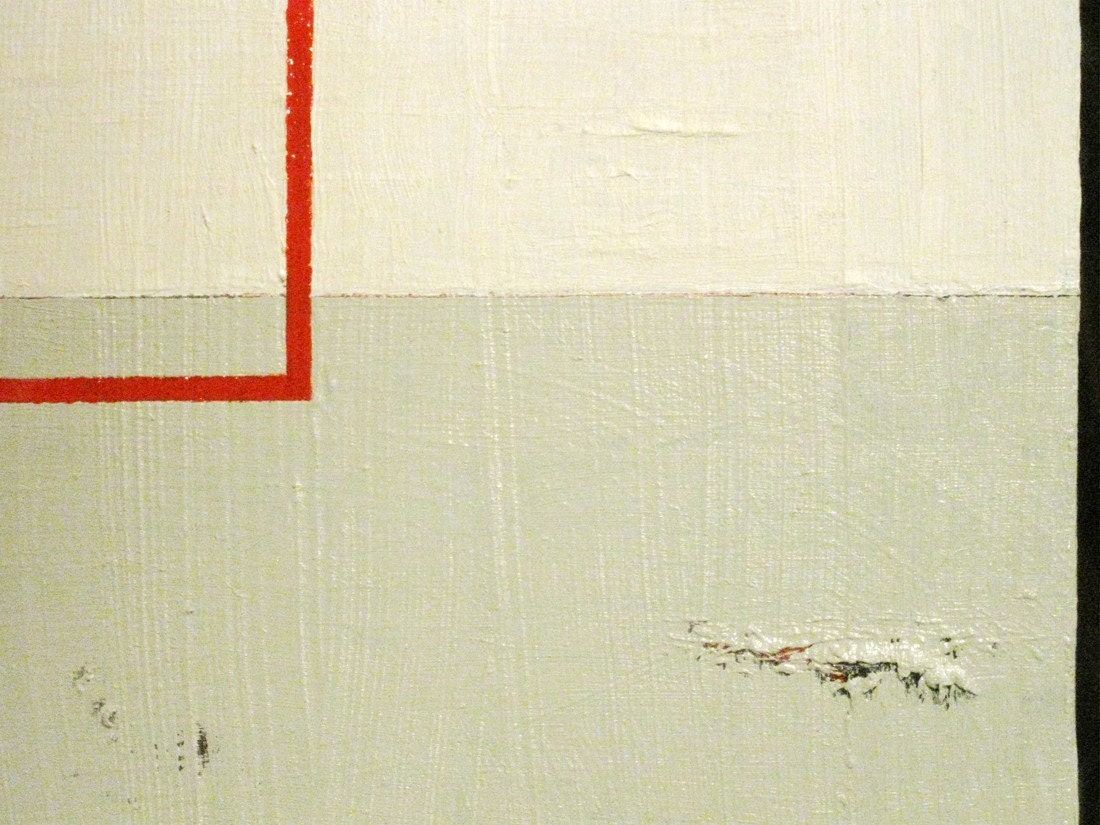 |
| Circuit 5 (Detail) |
 |
| Circuit 7 (12 x 12") |
Graham Heffernan's Artist's Statement:
"In my work I deal with spaces. Abstracted interiors with a musical arrangement of elements. Every painting is stripped down to it's minimal qualities in my attempt to approach the essence of a space. Materials, such as paint, gel and paper are another main reason that I create this art. I get lost in materials and often they take over the artwork and pieces become totally about materials (i.e. Gel Squares)."
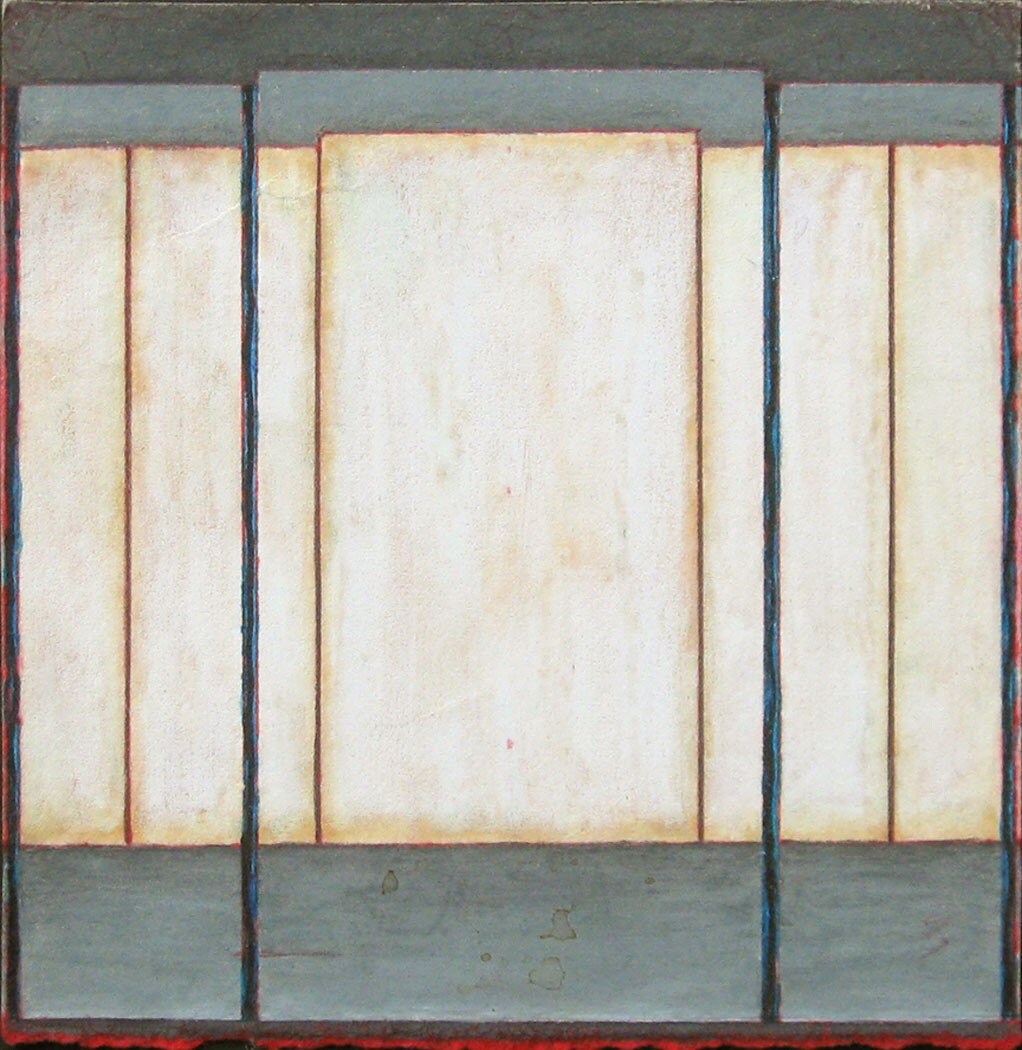 |
| Space / Rythm (4 x 4") |
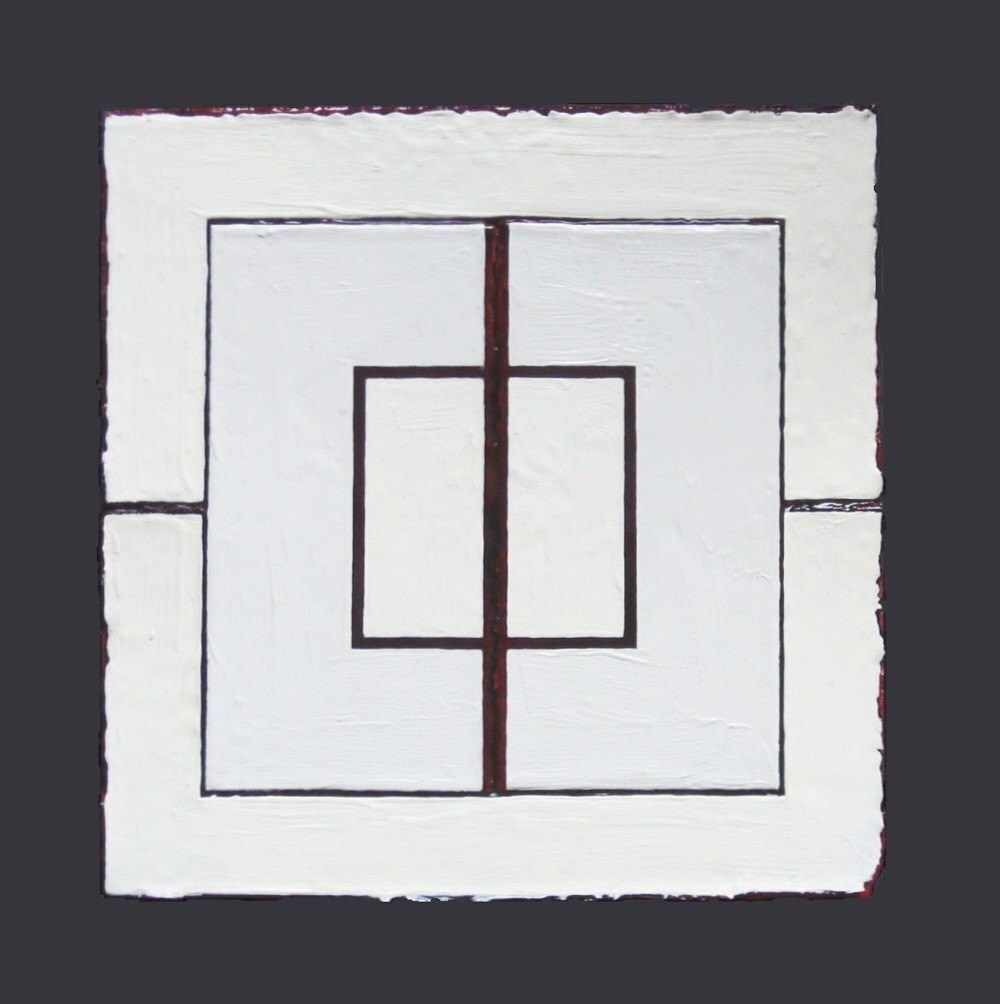 |
| White Abstract (7.75 x 7.75") |
Finding Graham Heffernan's work on Etsy renewed my faith in the site as a viable place for selling fine art.
Monday, November 22, 2010
On the Easel: Key Limes Study
 |
| Lime Study 1 |
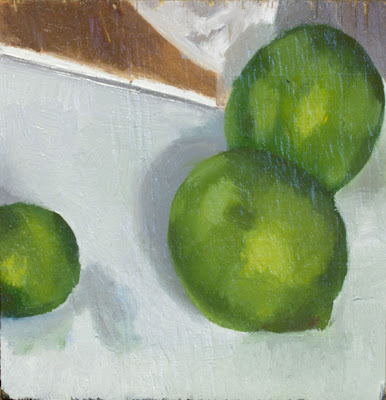 | |
| Lime Study 2 |
 |
| Lime Study 3 |
 |
| Lime Study 4 |
 |
| Lime Study Group |
These little still lives are painted on wood and are quite small, the largest being 5 x5". I'm afraid my inexperience in still lives is terribly evident, but now I've worked the desire for representational images out of my system.
Friday, November 19, 2010
On the Easel: Struggle, Paintings No. 46, No. 47, and No. 48
 |
| No. 46 (24 x 24" oil on canvas) |
 |
| No. 47 (24 x 24" oil on canvas) |
 |
| No. 48 (18 x 18" oil on board) |
Success does not come without struggle. Struggle is certainly the point I am at with these three paintings. The first two paintings I started over the last two Sundays painting live at Dekka's Artisans' Market. The pictures above show them after my second session working on them. I've been looking at more and more abstract works and I am struggling with the balance of atmosphere and distinct mark-making. Having worked previously in thin layers, I'm experimenting with thick strokes of paint on the canvas. The struggle now is balance, which amount of each element makes for the most engaging experience.
I love the subtlety and luminosity of the low contrast paintings, but when compared to my previous works, they are not as immediately engaging.
Struggle is a part of the process, and I am not disheartened. Without it there would be no edification, no growth. Without struggle this work would not be worth doing. As part of the process I suffer it, to become a better painter, a better artist, to better understand my work and myself. Struggle on.
Thursday, November 18, 2010
The Best Monday Ever
 |
| The Front (40 x 48") |
 |
| The Front, detail (40 x 48") |
On Monday evening I received an email from Joshua Bromaugh, the artist from last Friday's "Artist I'm Looking At" segment. He included two pictures of his most recent painting along with the email.
Hi Kailtin,I'd never expected to hear from him. I tend to of this vast distance between the level of art I'm working at and 'professional' art, successful art. For him to actually take a look at my work, and like it! It really made my day.
Your blog post about my work was pointed out to me and I appreciate the compliments.
But I'm writing to tell you that I took the time to look at your work and I admire what I saw. Good luck, and keep it coming.
Thanks again,
Josh
Shortly after I received Josh's email, I got one from Etsy. The item I had posted earlier that day had sold. My fourth sale so far on Etsy. The next day I found out that the treasury I was featured in made the front page. My first front page feature, ever. Probably the best Monday I've ever had.
Sunday, November 14, 2010
Etsy Treasury Feature
This morning I got an email about being featured in an Etsy Treasury by Under My Feet. It is an adorable collection of tiny treasures from throughout the Etsy community. My Watercolor No. 15 is among the wonderful oddities.
Friday, November 12, 2010
Artists I'm Looking At: Joshua Bronaugh
The internet has an interesting way of bringing art to my attention. The art of Joshua Bronaugh came through my news feed a few weeks back and it's been open in my browser window since, for me to peruse while I'm working.
The first thing that struck me about his work was that perfectly toed line between realism and abstraction that makes the work really dynamic and engaging. Joshua Bronaugh works with a number of mediums, the painting above is made with oil paint, motor oil, alkyd, and resin on canvas. Upon hearing this, the painting became very real to me, imagining the texture and smell the motor oil would produce. This painting in person would be very tactile, having an extremely thick, modeled surface.
Joshua Bronaugh's paintings feel enormous. When viewing them on his website, I imagined them to be quite large, perhaps 4 to 6 ft or so, but many of his paintings are in the 2 ft range, much the size that I've been currently working in. Which may be why he puts a disclaimer on his website:
I would love to see Joshua Bronbaough's work in person unfortunately I will not be in New York any time in the foreseeable future.
 | ||
| Lithuanian Love Song (27 x27") |
The first thing that struck me about his work was that perfectly toed line between realism and abstraction that makes the work really dynamic and engaging. Joshua Bronaugh works with a number of mediums, the painting above is made with oil paint, motor oil, alkyd, and resin on canvas. Upon hearing this, the painting became very real to me, imagining the texture and smell the motor oil would produce. This painting in person would be very tactile, having an extremely thick, modeled surface.
 |
| Change is the Disease and the Doctor, Both (36 x 48") |
He makes a valid point. Paintings are physical things, they have a physical presence in a room. You really need to see them in person to appreciate them appropriately. Every monitor displays color with a slight variation which a painter cannot control. However, that being said, it is important for contemporary painters to display their work online. Not every art enthusiast lives in New York or LA. I am a firm believer that art should be available to all, and as a child of the internet age, what better a place to display your work.Websites are the worst ways to look at paintings. Digital images are compressed, have poor color, have no sense of scale and simply do not glow like paint does. I would rather a person see one of my paintings through a window from across the street in the rain than have him see anything I have ever made online.
 |
| Black Monk (Swamp Thing) (24 x 24") |
 |
| Nimbus (24 x 18") |
Thursday, November 11, 2010
On the Easel
 |
| No. 43, 34 x 36", oil on canvas |
 |
| No. 46, 24 x 24", oil on canvas |
Wednesday, November 10, 2010
Dekka's Artisans Market in Review
While a bit slow at times, Dekka's Artisan's Market was an entertaining way to spend my Sunday afternoon. I met some awesome local artisans including Migdalia and Erika Taguchi-Newton.
Migdalia makes purses out of recycled t-shirts and embellishes them with her unique dolls.
Erika Taguchi-Newton is an illustrator specializing in what she calls "fantasy art and geeky crafts."
Migdalia makes purses out of recycled t-shirts and embellishes them with her unique dolls.
Erika Taguchi-Newton is an illustrator specializing in what she calls "fantasy art and geeky crafts."
 |
| Add caption |
Sunday, November 7, 2010
Live Painting Today at Dekka
Dekka, the fashion, art, and music boutique where some of my work is hung, is having their first ever Sunday Artisans Market. Originally planned to be a monthly event, the Dekka owners got such a heavy response that the Artisans Market will be held every Sunday. Today I'll be doing some live painting down at the show. I'll also be tweeting from the event from my new twitter handle, so be sure to follow me at twitter.com/_kaitlincarroll .
Saturday, November 6, 2010
How to Stretch a Canvas
One must have in a painter's arsenal is knowing how to stretch a canvas. So, here goes, some step by step instructions on how to stretch a canvas. Through the photo series, I stretch my own gallery wrapped canvas. Gallery wrapping simply means that the canvas is wrapped all the way around the edges and stapled to the back and the sides are primed just as the surface. The clean edges allow the finished painting to be hung without a frame, if you so choose.
Materials You'll Need:
Lay out the wood stretcher bars. Align them, use the angle to make sure they are at 90 degrees.
Step 2: Nail Stretcher Bars
Nail the stretcher bars together at the corners. Use the angle while hammering to ensure the bars are secured at right angle.
Step 3: Layout, Measure, and Cut Canvas
To ensure that there is enough canvas to wrap around, measure the depth of the stretcher bars and add 2 to 3" more. The stretcher bars shown are 3" deep, so I've measured 6" around the entire frame. Cut canvas accordingly.
Step 4: Wrapping the Canvas
Starting at the center of one side of the frame, use the plyers to help get a good grip on the canvas (doing this with your hands will lead to raw knuckles, learn from my experience). Pull the canvas firmly with the plyers in one hand and using the staple gun secure the canvas to the frame.
Continue pulling the canvas and stapling, working opposing sides to ensure an evenly stretched canvas. Start at the top center, move to the bottom center, then right side center, and finally left side center. Start again 2 to 3" right of top center and continue as above. Repeat from 2 to 3" left of top center. Work in this way until all sides of the frame are covered.
Step 5: Corners
Once all the sides are covered, there'll be excess canvas at the corners. As a professor said when teaching me how to stretch a canvas, "If you can make a bed, you can stretch a canvas," at which point I realized that I didn't know how to fold the corners of a mattress. Well, now I do.
Pull the excess canvas into a sharp triangle, make sure there's no slack in the edges of the canvas. Fold the triangle to one side of the stretcher, making a 90 degree angle (as shown in No.2 above). Wrap the excess behind the canvas and staple.
Step 6: Gesso
Use an acrylic gesso to seal the canvas. Paint 2 to 3 coats of gesso on the surface and sides of the canvas. Let the gesso dry between each coat.
Voila!
Materials You'll Need:
 |
| Materials |
- Wood ( I use 1 x 3" pine)
- Canvas
- Hammer
- Nails
- Angle
- Scissors
- Plyers
- Staple Gun
- Large Paint brush
- Acrylic Gesso (white or tinted)
Lay out the wood stretcher bars. Align them, use the angle to make sure they are at 90 degrees.
Step 2: Nail Stretcher Bars
Nail the stretcher bars together at the corners. Use the angle while hammering to ensure the bars are secured at right angle.
Step 3: Layout, Measure, and Cut Canvas
 |
| Layout Canvas |
To ensure that there is enough canvas to wrap around, measure the depth of the stretcher bars and add 2 to 3" more. The stretcher bars shown are 3" deep, so I've measured 6" around the entire frame. Cut canvas accordingly.
Step 4: Wrapping the Canvas
Starting at the center of one side of the frame, use the plyers to help get a good grip on the canvas (doing this with your hands will lead to raw knuckles, learn from my experience). Pull the canvas firmly with the plyers in one hand and using the staple gun secure the canvas to the frame.
Continue pulling the canvas and stapling, working opposing sides to ensure an evenly stretched canvas. Start at the top center, move to the bottom center, then right side center, and finally left side center. Start again 2 to 3" right of top center and continue as above. Repeat from 2 to 3" left of top center. Work in this way until all sides of the frame are covered.
Step 5: Corners
Once all the sides are covered, there'll be excess canvas at the corners. As a professor said when teaching me how to stretch a canvas, "If you can make a bed, you can stretch a canvas," at which point I realized that I didn't know how to fold the corners of a mattress. Well, now I do.
Pull the excess canvas into a sharp triangle, make sure there's no slack in the edges of the canvas. Fold the triangle to one side of the stretcher, making a 90 degree angle (as shown in No.2 above). Wrap the excess behind the canvas and staple.
Step 6: Gesso
Use an acrylic gesso to seal the canvas. Paint 2 to 3 coats of gesso on the surface and sides of the canvas. Let the gesso dry between each coat.
Voila!
Friday, November 5, 2010
Artist's Statement: Baby Step No. 2
In continuation of preparing an artist's statement, the next step is writing down a short list of words and phrases you think of when pondering your work. Here's mine:
- landscape
- escapism
- reminiscence
- loneliness vs. self reliance (in the Emerson-ian sense)
- affectation
- atmosphere
- abstraction
- sentimentality (with both positive and negative connotations)
- evocative
Thursday, November 4, 2010
On the Easel: An Experiment Derived from Rauschenberg's White Paintings
 | ||
| No. 43 (36 x 34") |
 | |
| No. 43 Detail |
 |
| No. 44 (24 x 24") |
 |
| No. 45 (12 x 12") |
"In the summer of 1951 Robert Rauschenberg created his revolutionary White Paintings at Black Mountain College, near Asheville, North Carolina. At a time when Abstract Expressionism was ascendant in New York, Rauschenberg’s uninflected all-white surfaces eliminated gesture and denied all possibility of narrative or external reference."For a while I've been working in close values, but thinking about Rauschenberg's work has made me wonder how close can I get my values while still maintaining a landscape? So this week I've been working on pushing the values near the horizon line closer and closer together. No. 43, a painting for some family friends, is still in progress and unlikely to stay in its current state. However, No. 44, in my opinion, is wonderfully successful in this experiment.
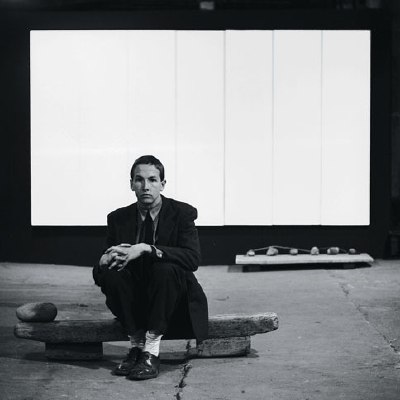 |
| White Painting (several panel), 1951 |
 |
| White Painting, 1951 |
Wednesday, November 3, 2010
Writing An Artist's Statement in Baby Steps
Graduate programs, internships, and galleries want you to have an artist's statement. I came out of college knowing I needed one, but dreading writing it. One or two paragraphs summing up my work, process, themes, and raison d'etre!? eeek! So rather than face this daunting task outright, I'm going to take baby steps.
A few simple questions:
How did you get into this work?
I've always wanted to be an artist. Well that's not true, first I wanted to be a doctor clown (what can I say, I was a creative kid), then there was a while in my early teens when I wanted to be a musician, but other than that, I've always wanted to be an artist. I'd be doing myself a great disservice if I didn't at least try.
My current work, the landscapes, came about due to a series of college classes taken in a certain order. I took a landscape drawing class with Sarah Frankel followed the next year by a painting class with C of C's resident abstract expressionist Michael Phillips. So I started playing with abstraction in landscapes. John Hull, the Studio Art department chair, said once that abstraction itself can be the subject matter of a painting, or abstraction can be the mantle through which the subject matter is discussed. I loved this idea, to paint landscapes without out rightly painting a landscape, to let the landscape be the mantle through which I discuss my themes.
How do you feel when your work is going well?
Exuberant, like walking out into the sun, like the world makes sense for a few hours.
What are some of your favorite things about your work?
The atmospheric quality. The tactility of the wood. The emotionally evocative quality.
Here are a few helpful resources I've gathered from the internet.
A few simple questions:
How did you get into this work?
I've always wanted to be an artist. Well that's not true, first I wanted to be a doctor clown (what can I say, I was a creative kid), then there was a while in my early teens when I wanted to be a musician, but other than that, I've always wanted to be an artist. I'd be doing myself a great disservice if I didn't at least try.
My current work, the landscapes, came about due to a series of college classes taken in a certain order. I took a landscape drawing class with Sarah Frankel followed the next year by a painting class with C of C's resident abstract expressionist Michael Phillips. So I started playing with abstraction in landscapes. John Hull, the Studio Art department chair, said once that abstraction itself can be the subject matter of a painting, or abstraction can be the mantle through which the subject matter is discussed. I loved this idea, to paint landscapes without out rightly painting a landscape, to let the landscape be the mantle through which I discuss my themes.
How do you feel when your work is going well?
Exuberant, like walking out into the sun, like the world makes sense for a few hours.
What are some of your favorite things about your work?
The atmospheric quality. The tactility of the wood. The emotionally evocative quality.
Here are a few helpful resources I've gathered from the internet.
- Molly Gordon's How to Write and Use an Artist's Statement
- Art Business.com's Your Artist Statement: Explaining the Unexplainable
Tuesday, November 2, 2010
New Portfolio Website
For the last year my brother has been very gracious in hosting my website on his web server. About two months ago, he decided to trim this toy from his budget and I took it upon myself to not only get my own web hosting, but to rebuild my website, by hand, from scratch, all by myself (well, almost). Two months, a trip to the local library later, and some whining at my brother, here is the outcome, my new portfolio site (warning: it looks crappy in Internet Explorer, I'm not that good).
This of course has led to a redesign and rethinking of my blog. To bring more viewers to my work I'll be writing new article segments, including:
- Artist's I'm Looking At
- How To
- Notable Etsians and Bloggers in the Arts
- Graduate School Admissions Process
- En Plien Aire Painting
- Small Business Articles
Subscribe to:
Posts (Atom)

















